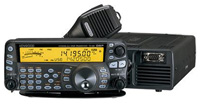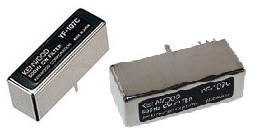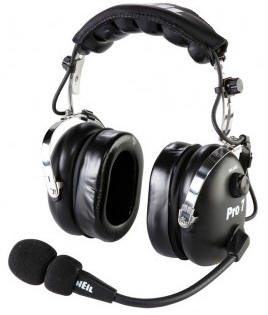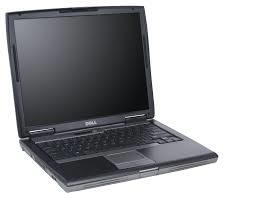|
After all, what kind of antennas should we take? If you were what
would be your choice?
With the low values of SFI and the difficulties in transportation,
what do we deserve?
Condition: The transport will have to be in a Golf
Bag, from that point we have several options:
-
-
Vertical antenna Force 12 XK40 10 to 40 Meters
-
- Vertical antenna Sigma I Pro Traveler 10 to 40
Meters
-
- Vertical antenna Antenna SQ9 10 to 80 Meters
-
- DXWire and VDA 12 Meter Mast Antennas
10,12,15,17 and 20 Mts and Vertical Ground plane for 30, 40 and
80m Meters
-
- Gustav Kelemen Dipoles 10 to 80 mts.
Why
i bring new antennas? My
first few years as a radio amateur were filled with gaping
voids on many aspects of the art. One of these voids was the
understanding of antenna operation relativ e to the makeup of
the fields forming the radiation pattern , and particularly
the vertical angle radiation. Participation during many years on URE
Union Radioaficionados Españoles Congress bropuight me a
greater deph of understanding in this area. From
QSO's on the bands it becomes apparent that other
Hams are plagued with the same lack of understanding. I
i is itewnded
True Ground is
difficult to find without extensive research
and specialized equipment not usually available to the average
amateur. In order to circumvent this obstacle of true ground
location, let us assume in all subsequent calculations that true
ground is in the surface of the earth, is a perfect conductor, and
will reflect the radiated signal totally, without loss of
energy..ntennas
are a very popular s probably spends the most time talking about,
both on a
nd
off the air , is his antenna system. There are at least two good
reasons for this, First, the antenna themselves
are pretty simple, at least from the standpoint of circuitry.
They contain No transistors, capacitors , resistors, diodes or even
vacuum tubes or any kind of difficult circuit difficult to
understand. Antennas are usually simply pieces of wire
or tubing with perhaps a transformer thrown in for impedance
matching . Thus, they are at least easy to see. The second reason
for the great deal of attention antennas get is their
performance . Every ham who has been around very long knows that
there is no easier way to improve his station's capabilities than to
improve his antenna. When a significant change for the better is
made in the antenna, the improvement in the station's ability
to communicate is immediately apparent, on both transmission and
reception. One thousand Euros ( the usual price of store bought
kilowatt amplifier on these days) spent on an antenna installation
will do worlds more good for amateur than will a similar amount
spent on a big "pair of boots" . Also,
antennas are very popular because they are easier to homebrew than
most pieces of equipment . and easier to make operate properly
after their construction. Thus, the antenna deserves it's popularity.
And if this so, then the simple theory behind the antenna
deserves to be understood by all of us. So, the reason for this
comment - will discuss the very simple theory of antenna gain,
efficiency, capture area and effective height. These are subjects
of which very few amateurs seem to have a good grasp today. Much is
heard about antenna "gain" especially, but few seem to
have exact understanding of what they are speaking about. Perhaps
this comment will help to clear up a little of confusion.
An
antenna can basically be thought of as advice converting energy from
one form to another. When an electromagnetic wave strikes as antenna
we find that electrical power is available at its terminals. On the
other hand, when we apply electrical power to the terminals of the
antenna , we find that electromagnetic field (wave) is
radiated by the antenna.
This
property of working both "backward and forward" is called
reciprocity and is characteristic of antennas
Most
of us realize that it is Electromagnetic field s or "waves"
that provide invisible link between transmitting and receiving
stations in radio communications system. But the fact is that no one,
even the professionals, knows just what a electromagnetic field is.
Short
vertical antennas are of interest to many amateurs, Every mobile
whip antenna is short, much too short, at frequencies, 7, 3.5Mhz.
Also, not everyone is blessed with sufficient clear space for
erection of horizontal dipoles at those frequencies, For such
amateurs, the short vertical is a solution which may be attractive ,
especially for use on 40 and 80mts. this is a discussion for
those who care to know something about how such antennas can work,
and what their limitations are. Since this type of antenna is
electrically short, something as to be done to lengthen it so that
will resonate and take power from the transmitter. One of the simple
ways of resonating a short antenna is by use of a series loading
coils.
EQUIPMENT
This
page contains links to equipments used by project members on this
Amateur Radio Adventure, software programs and components developed
by the project, and to other tools we've found useful and collected
here for your convenience.
I
will take my I PRO Traveller Antenna and Vertical Wire Dipoles (VDA).He
suggested that while he'd squeeze me in somewhere if it became
necessary, he also had a well-equipped suitcase portable station
Kenwood TS480S with internal tuner, and ALINCO DM33OMVE power supply.
I've permission for the antennas which perhaps I could operate from
the cogttage? I scoped out the resort and found the perfect spot to
string up the G5RV from a 4th floor stairwell window over to a
convenient tree in the courtyard and our 2nd floor balcony was
exactly half way in between. I thought long and hard about how to
ask about putting up the antenna. In the end I decided it sounded
better to describe it as 'a wire aerial for my radio' instead of a 'hundred
foot long ham radio antenna'. I shouldn't have worrried. The owner
of the cottage specialized in catering to their guests needs and the
best line I heard on the whole trip was 'Are you sure you wouldn't
like us to have the maintenance workers put up your antenna for you?'
Now that's service! With the license in hand (it's actually a very
official looking 10-page document, printed and bound!) and the G5RV
hung in the garden it was time to get on the air. I had never used
an Icom IC-7000 before but I knew what I wanted to do so after an
hour of flipping through the manual I had the mic gain, ALC and
compression set up and programmed the voice memories.
|
|
Every
body know that if you prefer one Manufacteur Equipment you never
change if you prefer Yaesu, ICOM, Kenwood , Ten-tec etc, . We are
talking about OM with some years on experience , myself I never
change from Kenwood, i've already operate under diferent conditions
or with Yaesu or ICOM even with TEN-TEC and Drake. We can start here
a discussion, but i've a costumate to listening good reception on my
Kenwood s ,that's the reason
|
 KENWOOD Transceiver
TS-480 DSP KENWOOD Transceiver
TS-480 DSP
|
|

|
|
Features
|
|

|
160-6 meters
|
|

|
Electronic Memory Keyer
|
|

|
100 Alpha Memories
|
|

|
100 Watts Output (200 on HX)
|
|

|
Wide-Narrow Deviation
|
|

|
Remote head
|
|
|

|
Audio D.S.P.
|
|

|
Digital NL
|
|

|
10 Hz Tuning
|
|

|
1750 Hz Tone
|
|

|
Multiple Scan
|
|

|
Time-out Timer
|
|
|
|
The Kenwood
TS-480SAT is an all mode HF plus 6 meter amateur transceiver.
It features AF digital signal processing on both receive and
transmit. A quad-mixer provides receiver dynamic range
equivalent to that of the TS-950 class. Receive coverage is
500 kHz (30 kHz VFO) to 60 MHz and direct frequency keypad
entry is supported. The stand-alone LCD control panel features
its own speaker and be placed up to 16 feet away from the main
unit. This radio features attractive
back lighting of the display and the controls! The supplied
tabletop panel brackets is convenient for base use. 100
Alphanumeric memories are available and multiple scan
functions are supported including: program scan, VFO
scan, memory scan, group scan, subtone scan and CTCSS scan.
The TS-480SAT can transmit 100 watts (5 watt minimum RF output
for QRP work). Many operational parameters can be set to your
operating preferences via the menu system. Up to two optional
IF filters may be added. ARCP-480 and ARHP-10 control software
downloads are available free from www.kenwood.net .
Note: The
TS-480HX is similar, but provides 200 watts (100 on 6 meters)
and does not have the built-in antenna tuner. The rear panel
of the TS-480HX has dual fans and dual DC inputs.
You may also
obtain technical support by e-mail or telephone at [Kenwood];
and by e-mail .
|
|
KENWOOD
CW Filters
|
|
 |
Two filter slots
in these radios allow you to choose two of the three
available filters;
YF-107CN 270 Hz narrow CW,
YF-107C 500 Hz standard CW and
YF-107SN
1.8 kHz narrow SSB. Each have excellent shape factor so you
can capture just what you want to hear. Order your Kenwood Crystal Filters forKenwood
TS-480 ...
I have instaled both 250 Hz and 500 Hz from , because I mostly do slow speed CW , and
many of the station I communicate with uses older radio ,
their frequency often drift as time pass, and 500Hz is
easier to tune, only time I prefer 250 Hz filter is when
there are a lot of noises from near by electronics power
line , etc, then 250 Hz remove more noise than 500 Hz
filter, my first choice would be 500 Hz , but I also like
option of having 250 Hz as secondary
You may also
obtain technical support by e-mail or telephone at [Kenwood];
and by e-mail .
You may also
obtain technical support by e-mail or telephone at WIMO; and by e-mail.
|
|
HEIL Headphones Model
PROSET
|
|
 |
The PRO-SET Headphones
This is also
great part of the equipment, I just tell you I've two pairs,
one for my own station and the other I've use to play
radio on portable, DXpeditions also on Fieldays. Very
confortable it's a great piece for DX'er with HC4 piece on
Microphone works very well with all amateur equipments.When
you use for the first time , you don't want to miss for other
times, and help you on the pile-ups.
The Heil
Pro 7 headset
offers a feature set that compliments the Heil Sound
standard for headset design. Unlike copies of various
aviation type headsets, the PRO 7 is not a copy. It brings
truly new technology to the headset industry. The 2" thick
gel foam ear pads provide extreme comfort for extended
periods of time while exhibiting passive noise reduction
rated at -26dB which is ideal for use in high ambient noise
environments. Using technology Bob Heil learned from Paul
Klipsch back in the early 70s, the ear cup enclosures were
tuned to the free air cone resonance of the speaker cone
thus providing very low distortion with maximum voice
articulation providing the ultimate sound reproduction for
communications. The exclusive Heil Phase Reversal system
(HPR) allows you to acoustically move the signals forward
and creates a spatial widening of the sound field. This
feature makes it easier to pull a weak signal from a pileup
– useful for DxPeditions and contests as well as a stress
reliever as your change the phase angle of the program
source. A speaker balance control allows preferred level
between the speakers.
|
|
-
Pro 7:iC Electret
-
Pro 7 iC:Dynamic
|
|
|
-
Pro 7: 100 Hz - 12 kHz
-
Pro 7 iC: 35 Hz - 12 kHz
|
|
|
-
Pro 7: 100 Hz - 12 kHz
-
Pro 7 iC: 35 Hz - 12 kHz
|
|
|
-
Pro 7: 600 ohms
-
Pro 7 iC: 1.5k ohms
|
|
|
-
Pro 7: -57 dB @ 1 kHz
-
Pro 7 iC: -48 dB @ 1 kHz
|
|
|
|
|
|
You may also
obtain technical support by e-mail or telephone at HEIL; and by e-mail.
You can also contact CLASSICINTERNATIONAL
|
|
|
|
DELL Laptop
|
|
 |
The
Latitude D520
delivers exceptional value with many of the latest
technologies and a generous set of features. IT managers
demand the excellent quality, common peripherals and support
for key industry trends such as 802.11n Wi-Fi and the new.
Microsoft® Windows Vista™ operating system provided by the.
Latitude
|
|
